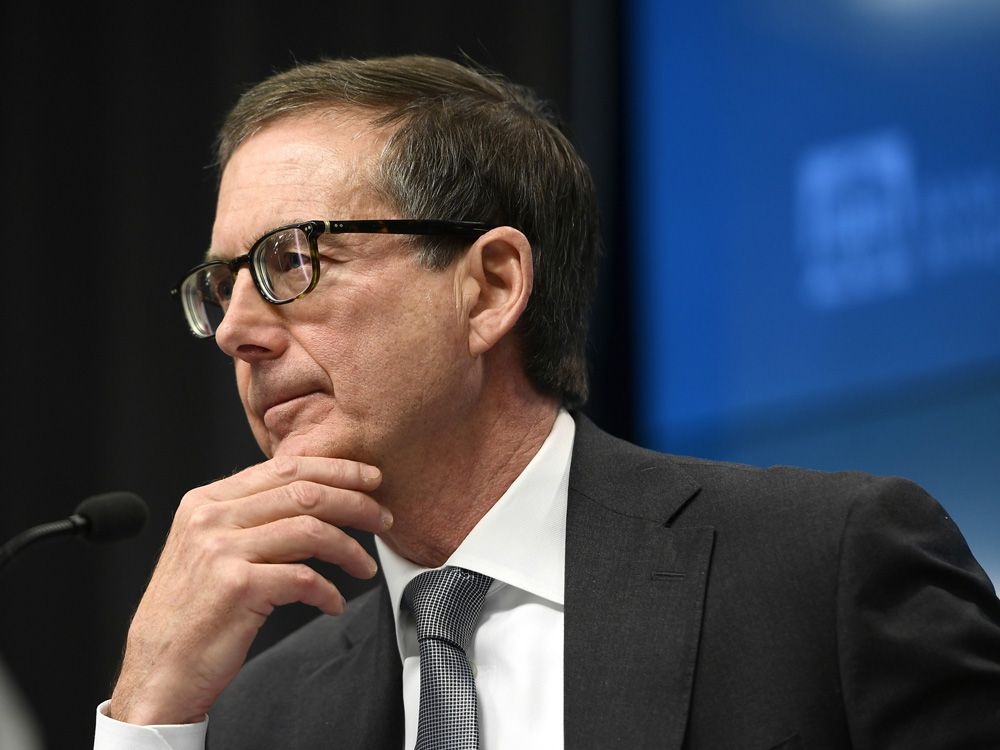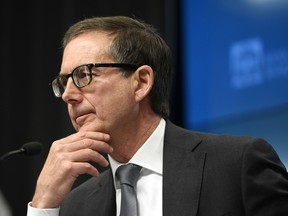Tiff Macklem stokes doubts about usefulness of forward guidance

The future is hard to predict with precision, and attempting to do so risks reducing a central bank’s room to manoeuvre

Article content
The Bank of Canada’s controversial decision to leave the overnight interest rate unchanged last week has raised questions about the usefulness of forward guidance as a tool of monetary policy.
Advertisement
Story continues below
This advertisement has not loaded yet, but your article continues below.
Article content
Tiff Macklem used his first policy meeting as governor in July 2020 to make an unusually specific promise for a central banker. He and his deputies said they would keep the benchmark borrowing rate near zero, “until economic slack is absorbed so that the two per cent inflation target is sustainability achieved.”
That language was ambiguous on its own, but it was possible to sketch a rough trajectory for interest rates by checking the central bank’s new forecast for inflation. Still, Macklem decided to leave nothing to chance. When he appeared on BNNBloomberg later that day, he gave businesses and households a date they could circle on the calendar.
Advertisement
Story continues below
This advertisement has not loaded yet, but your article continues below.
Article content
Not everyone thinks central banks should be making those kinds of promises. The future is hard to predict with precision, and attempting to do so risks reducing a central bank’s room to manoeuvre. On the other hand, an assurance that interest-rate policy will remain unchanged can instil confidence during a crisis, and Macklem was trying to stave off an economic depression. He was at the Bank of Canada when former governor Mark Carney deployed forward guidance during the Great Recession and he decided it was worth trying again.
“One thing that we have sort of learned over the last couple of decades in monetary policy is that expectations are pretty much everything,” said Stephen Gordon, an economics professor at Laval University in Quebec City who specializes in monetary policy. “What the Bank of Canada does now is often much, much less important than what everyone thinks it’s going to do in the future.”
Advertisement
Story continues below
This advertisement has not loaded yet, but your article continues below.
Article content
Macklem’s pledge appears to have helped. The recovery from the COVID recession was much stronger than many expected, thanks in large part to extraordinary amounts of monetary and fiscal stimulus. The labour market is back at pre-pandemic levels and gross domestic product (GDP) is nearly back to where it was at the end of 2019. The Bank of Canada acknowledged last week that the output gap, the difference between actual GDP and the central bank’s estimate of the economy’s non-inflationary speed limit, has essentially closed, meaning the economy has found a new equilibrium.
Yet Macklem and his deputies opted to leave the benchmark interest rate at 0.25 per cent last week, sticking with an emergency setting even though the emergency has passed. Inflation, as measured by year-over-year increases in the consumer price index, shot past the two-per-cent target months ago, and will likely exceed five per cent in this quarter, according to the Bank of Canada’s new forecasts. The decision to pass on a chance to raise interest rates caused considerable consternation on Bay Street, where frustrated analysts confessed to being “confused” by the central bank’s messaging.
Advertisement
Story continues below
This advertisement has not loaded yet, but your article continues below.
Article content
-

What does the rate hold say about Canada and U.S. economies?
-

Bank of Canada puts credibility on line with hold on rates: economist
-

The Bank of Canada is holding, but make no mistake, rate hikes are coming
“There needs to be a serious post assessment of how valuable or how helpful the forward guidance related to output gap was,” said Jean-François Perrault, chief economist at Bank of Nova Scotia.
Last week’s interest-rate decision was clearly a close call. The scales appear to have been tipped in favour of leaving interest rates unchanged by two factors: uncertainty about the Omicron wave of COVID-19 infections, and worries at the central bank over how it would look if they raised interest rates months sooner than they initially indicated they would.
Advertisement
Story continues below
This advertisement has not loaded yet, but your article continues below.
Article content
The Bank of Canada’s forward guidance had evolved over time. In October 2020, the policy-makers attached their guidance to the calendar, stating explicitly that its forecasts suggested the output gap would close in 2023. As the recovery accelerated, they tweaked their guidance, saying in April of 2021 that their updated outlook implied liftoff “sometime in the second half of 2022.” The economy continued to surprise, as did the persistence of the post-pandemic burst of inflation. In October 2021, the central bank advised that it likely would begin raising interest in the “middle quarters” of 2022.
The prices of financial assets tied to short-term interest rates implied that most traders had assumed the Bank of Canada would raise interest rates last week. Instead, Macklem ended forward guidance, deciding a January increase would have been too abrupt after signalling in December that there would be no change until the spring.
“It would have been a somewhat messy exit from that forward guidance if they had hiked having just reiterated in December that they probably wouldn’t be doing so until the middle quarters of 2022,” Josh Nye, an economist at Royal Bank of Canada, said in an interview with the Financial Post’s Larysa Harapyn. “That communication strategy had a lot to do with the bank’s decision to hold steady.”
• Email: bbharti@postmedia.com | Twitter: biancabharti
Advertisement
Story continues below
This advertisement has not loaded yet, but your article continues below.








